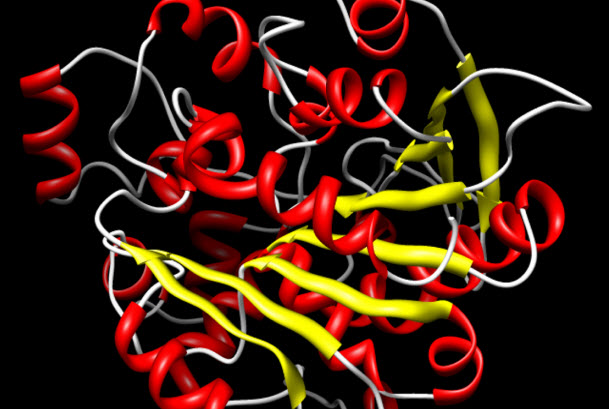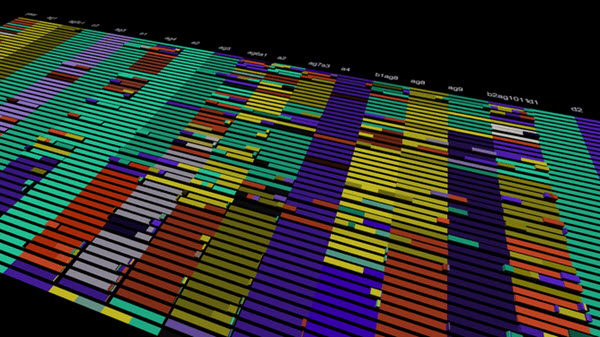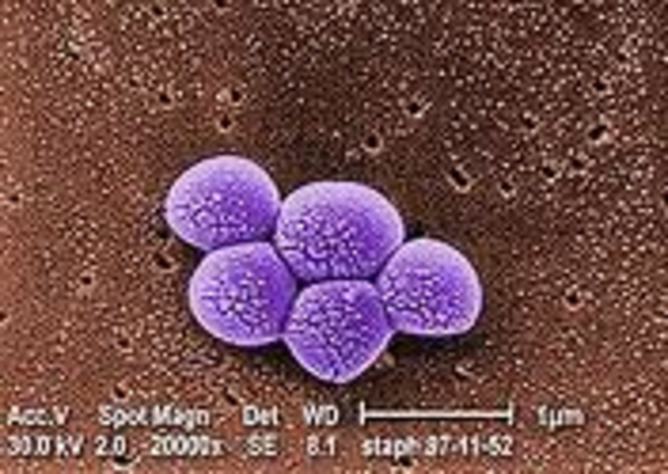Why we can trust scientists with the power of new gene-editing technology
December 1, 2015

Gene editing allows us to eliminate any misspellings, introduce beneficial natural variants, or perhaps cut out or insert new genes (credit: Libertas Academica/Flickr, CC BY-SA)
By Merlin Crossley
Dean of Science and Professor of Molecular Biology, UNSW Australia
A summit of experts from around the world is meeting in Washington to consider the scientific, ethical and governance issues linked to research into gene editing. Convened in response to recent advances in the field, the summit includes experts from the U.S. National Academy of Science, the UK’s Royal Society and the Chinese Academy of Science.
Gene editing is a new technique that allows one to change chosen genes at will. It has been applied to many organisms but a recent open-access report from China showing the modification of human embryos using a technology known as CRISPR/Cas9 mediated editing set alarm bells ringing.
Here’s the main fear: if you modify an embryo (and therefore also its germline), you change not only the person that embryo will become but also its future sons, daughters, grandsons and granddaughters.
Since we don’t know much about this technology, it’s right to stop and think about it. But personally I’m not overly concerned: we’ve been here — or somewhere quite like it — before.
Learning from history
In 1975, scientists met at Asilomar on the Californian coast to discuss a moratorium on recombinant DNA (that’s DNA formed from combining constituents from different organisms).
Alarm bells had started ringing when scientists realised they could combine the DNA from a monkey virus with a circle of DNA called a plasmid, carrying an antibiotic resistance gene purified from the human gut bacteria, Escherichia coli (E. coli).
This cocktail sounded dangerous and scientists discussed a voluntary moratorium on certain experiments, as well as sensible guidelines for containing recombinant material within laboratories.

Horizontal gene transfer occurs in nature when DNA is carried between species by viruses and related carriers (credit: Jer Thorp/Flickr, CC BY)
Regulations and guidelines are still in place and after 40 years few, if anyone, has been harmed by recombinant DNA. And there have been no reported outbreaks of recombinant material that have significantly affected human health or the environment.
All technologies, including different agricultural practices, have upsides and downsides, and most medicines and treatments have side effects. But recombinant DNA would now have to be classed among the least dangerous of scientific developments.
Understanding science
One reason the technology has proven so safe may be that genetic recombination has been going on for millions of years. In most cases, genes are simply passed on from parent to child. But horizontal gene transfer also occurs in nature when DNA is carried between organisms or even species by viruses.
Over time, DNA is naturally swapped around and moved. Though you may have eaten transgenic plant products, I very much doubt you’ve noticed.
There was a fear “mad scientists” would invent dangerous new superbugs and killer viruses. Perhaps this could have happened, but sadly there are enough pre-existing dangerous substances and naturally occurring diseases, which have been perfected by evolution, out there already. So germ warfare scientists are more likely to just use them.
Another fear was that researchers would modify humans. Most countries quickly outlawed the modification of human germ cells and, to my knowledge, it has never occurred. In general, scientists seem to have obeyed the regulations.
But another reason is that it has proved difficult to introduce new genes into mammalian cells. It’s legal to modify human cells, such as blood stem cells, to cure genetic diseases. But human cells are among the hardest to modify. Human “anti-viral” software seems so powerful that it inhibits the stable insertion and expression of new DNA.

Fears that “mad scientists” would use recombinant DNA techonolgy to create superbugs like MRSA have not eventuated. (credit: Merrill College of Journalism Press Releases, CC BY-NC)
The promise of gene editing
I’m sure you’ve met people who’ve had their teeth straightened or undergone cosmetic surgery. But you’ve probably never met anyone who’s had gene therapy or ever seen a transgenic animal.
Could that change with gene editing? Gene editing is so precise that one doesn’t just lob in a new gene and hope it works; what one does is edit the existing gene to eliminate any misspellings, introduce beneficial natural variants, or perhaps cut out or insert new genes into chosen locations.
Our anti-viral software may not even detect what’s happened. And provided there aren’t any “off-target’” effects, where we hit the wrong gene, there may be no or minimal side effects.
Now that’s it’s so easy to meddle in human genes, why shouldn’t we worry?
The new technology is a game-changer — but it’s not a runaway phenomenon, like releasing cane toads, blackberries or rabbits into Australia. After 40 years, there have been few, if any problems, with genetically modified organisms. And the experiments — though much easier now — are still so elaborate and expensive that the technology will spread slowly.
We’ll likely remain cautious about modifying human embryos and about any modification that may be passed on to the next generation. To date, consent is required for all treatments. And while patients may opt for experimental cancer therapy or surgery, we always try to think carefully when others, who cannot consent, will be affected.
Some people will even ask why it’s wrong to correct a defect that could haunt future generations. Or, if we could introduce a gene variant that protects people from cancer — such as creating a duplication of the tumour suppressor gene p53 — why wouldn’t we want that for our children?
Genetics is a branch of science that’s ripe for discussions, and conversations on recombinant DNA, gene therapy, cloning and stem cells have all gone well. Guidelines have been sensible and researchers have largely complied with them.
The very fact that people from across the world are gathering to discuss the issues surrounding the latest breakthroughs in gene technology is a very strong sign that the science will be used responsibly. One hopes that the concurrent meeting on climate change in Paris is also a victory for science.
Via The Conversation (Creative Commons license)
Disclosure statement
Merlin Crossley works for the University of New South Wales. He receives funding from the National Health and Medical Research Council and the Australian Research Council. He is a Trustee of the Australian Museum, a Board Member of the Sydney Institute of Marine Science, a Council Member of the European Molecular Biology Laboratory Australia, and the Australian Science Media Centre.